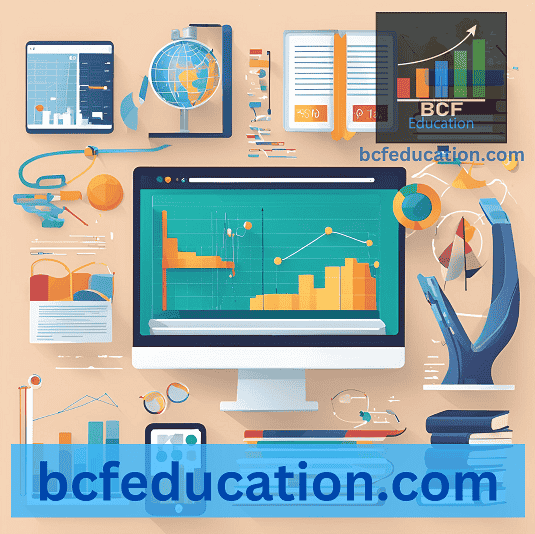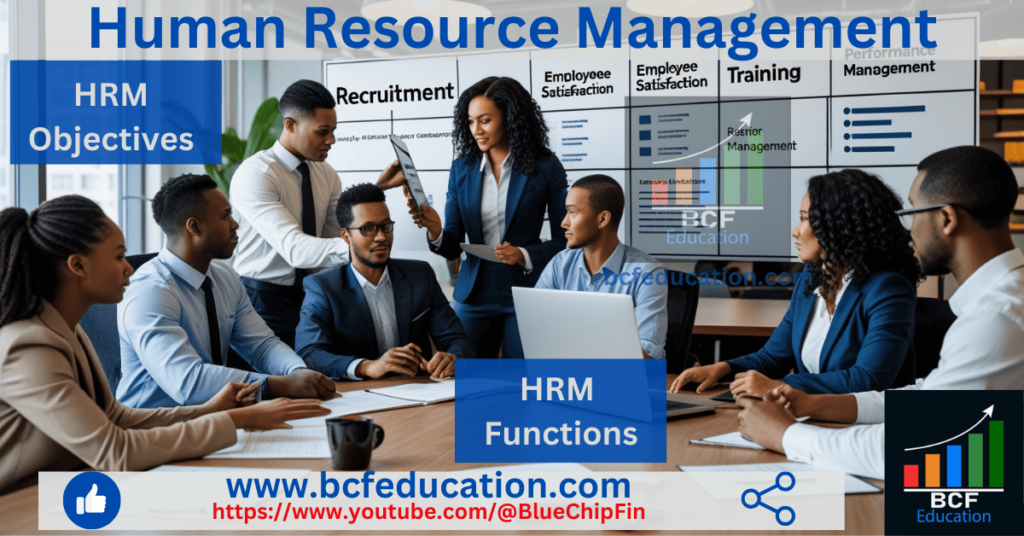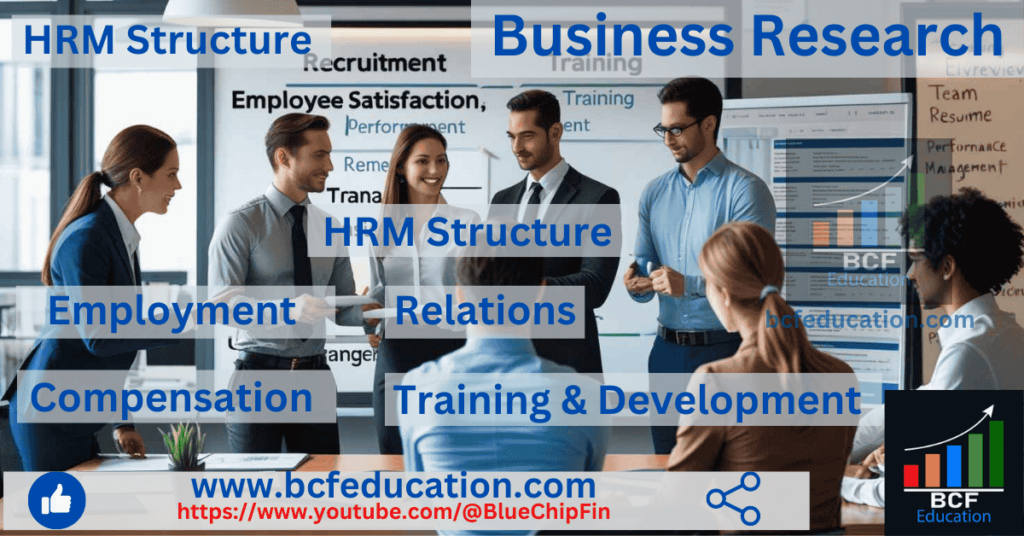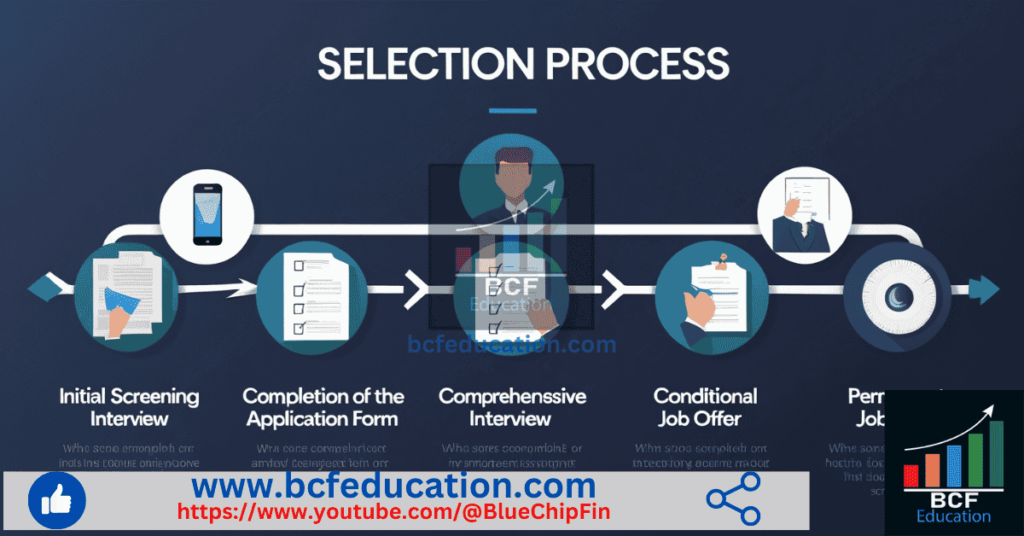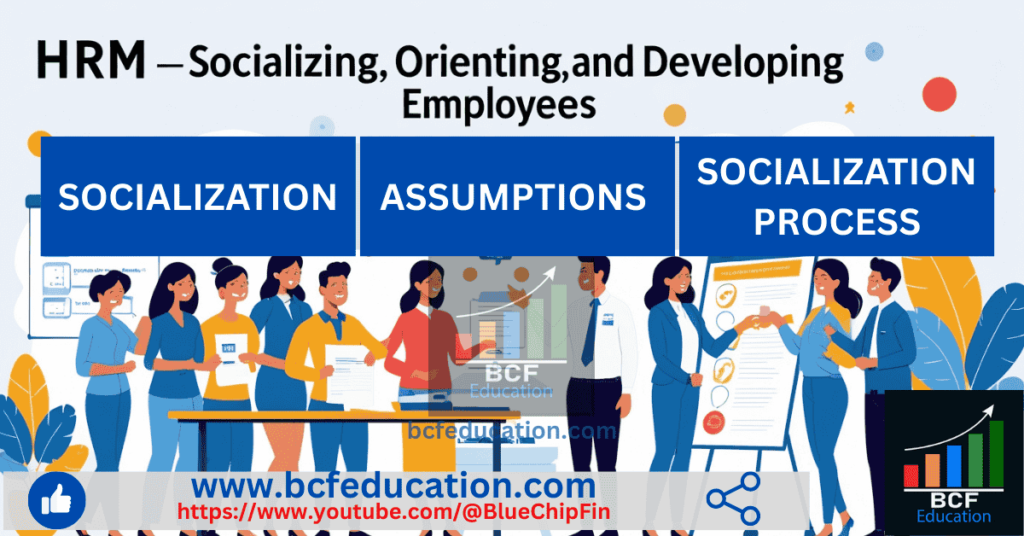What is Human Resource Management, Objectives and Functions of HRM. Discover the essence of Human Resource Management (HRM) in this comprehensive blog post! We’ll explore what HRM entails, its core objectives, and the critical functions it serves in modern organizations. From recruitment and training to fostering a productive workplace, understand how HRM is essential for aligning workforce efforts with organizational goals. Whether you’re a student, a professional, or an HR enthusiast, this post provides valuable insights into the pivotal role HRM plays in driving organizational success and employee satisfaction. This topic is equally important for the students of the subject Human Resource Management across all the major Universities such as MU, DU, PU & others & across all business & finance disciplines.
Table of Contents
What is Human Resource Management, Objectives and Functions of HRM.
Human Resource Management
Human Resource Management (HRM) is about connecting people and organizations in a way that benefits both. The goal is to bring out the best in employees by gaining their full cooperation and support. Simply put, HRM is the skill of finding, developing, and keeping the right people to help an organization achieve its goals effectively and efficiently. It has the following key features:
Features of Human Resource Management (HRM) in Simple Terms:
Everywhere in the Organization: HRM is present at all levels and applies to every business, no matter the size or type.
Focused on Action: Instead of just creating paperwork, HRM focuses on solving employees’ problems at work through practical policies.
Supports Individual Growth: HRM helps employees reach their full potential by providing opportunities for growth through fair hiring, training, and rewards. It aims to inspire employees to do their best.
Centers on People: HRM is all about managing people, whether they are individuals or teams, by placing them in the right roles to achieve results. Rewards and recognition motivate employees to improve further.
Prepares for the Future: Effective HRM ensures that an organization has skilled and motivated employees ready to meet future challenges and goals.
Develops Employee Potential: HRM focuses on helping employees grow by offering training, fair rewards, and opportunities to try different roles. The goal is to fully use their talents to achieve organizational success.
Builds Strong Relationships: HRM fosters good relationships among employees at all levels, working to align everyone’s efforts to meet the organization’s objectives.
Covers All Levels of Work: HRM handles everything related to people working in the company—whether they are managers or front-line employees. Its core aim is to manage human resources effectively to achieve organizational success while ensuring employees are satisfied.
Supports Other Teams: HR departments exist to assist and guide managers, helping them handle their teams more effectively. HR managers serve as advisors and specialists.
Uses Knowledge from Many Fields: HRM combines ideas from psychology, sociology, economics, and other disciplines to better understand people and their behaviors.
Ongoing Effort: Managing people isn’t a one-time task. HRM requires constant attention, care, and effort to maintain good relationships and ensure smooth operations every day.
Objectives of HRM
The principal objectives of HRM may be listed thus:
Help the Organization Achieve Its Goals
Like every other department, the HR department exists to help the company reach its objectives. If it doesn’t meet this purpose, it loses its relevance.
Use Employees’ Skills Effectively
HRM focuses on making the best use of employees’ strengths to benefit the company, its customers, employees, and stakeholders.
Provide Skilled and Motivated Employees
HRM ensures employees are well-trained and motivated to do their best. It evaluates their performance fairly and rewards them based on their contributions.
Boost Job Satisfaction and Personal Growth
HRM encourages employees to reach their full potential by creating programs that improve their job experience and personal growth.
Improve Work-Life Quality
HRM makes working at the company a fulfilling experience both professionally and personally. Better work-life quality leads to better performance.
Communicate HR Policies Clearly
HRM is responsible for effectively sharing information and listening to ideas, opinions, and feedback from both employees and external stakeholders.
Act Ethically and Responsibly
HRM ensures the company treats employees and society in an ethical and socially responsible way by following legal and moral standards.
The HRM Functions
HRM is the part of an organization that focuses on its people. It plays two key roles:
- Support Role: HRM provides help and guidance to employees, especially those directly involved in creating the company’s products or services.
- Manager’s Responsibility: Every manager has HR duties, even if they’re not part of the HR department. To manage people effectively, all managers need to perform HR-related tasks like hiring, training, and motivating employees.
Since every organization depends on its people, HRM focuses on hiring talented individuals, helping them grow, keeping them motivated, and ensuring they remain committed to achieving the organization’s goals. This applies to any type of organization, whether it’s a business, school, hospital, or social group.
Why HRM Matters:
Hiring and keeping great employees is essential for an organization’s success, no matter what it does.
To dive deeper, HRM can be broken down into four main functions:
- Staffing (hiring people)
- Training and development (preparing staff)
- Motivation (stimulate staff)
- Maintenance (keeping them)
Even the smallest organization with just one or two employees needs to manage four key HR functions. In small companies without a dedicated HR department, these responsibilities fall on line managers. Even in larger organizations, line managers share many HR tasks, whether or not an HR department exists.
Typically, HR departments help line managers with these tasks, and in some organizations, it might make sense for the HR team to handle them more centrally for better efficiency and consistency. To make things clear, we’ll explain these four functions as if they are handled by the HR department.
While there are different ways to approach HRM, when we break it down into these main functions, it becomes easier to understand. Let’s take a closer look at each component.
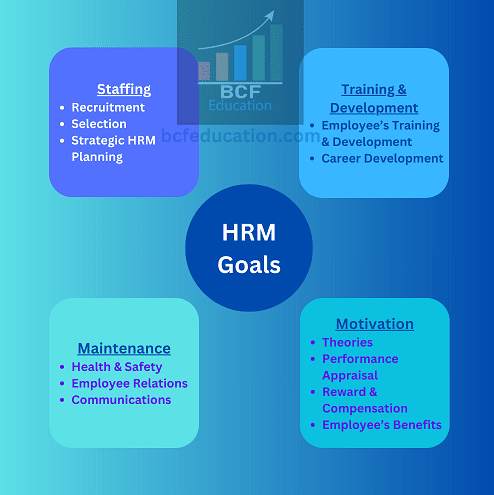
Staffing Function
Staffing starts long before recruiting—it begins with planning. HR must figure out why new employees are needed and what specific skills and qualities are essential for the job. This planning aligns with the company’s overall mission and strategy.
(1) Planning Before Recruiting:
HR must analyze the organization’s goals and determine what kind of talent is needed.
Changes in strategy (e.g., cost efficiency, innovation) may require new job roles or changes to existing ones.
(2) Job Analysis:
HR identifies what knowledge, skills, and abilities are essential for success in a specific role.
This information goes into the job description, which:
Shows candidates how their work supports the company’s mission.
Ensures hiring is based on clear criteria, reducing personal bias and potential discrimination.
(3) Recruiting the Right Candidates:
Recruiting involves creating a pool of applicants with the right qualifications.
Employers use strategies like branding (e.g., Google’s image of creativity and perks) to attract candidates who align with the company’s culture and values.
A good job description and branding also help unqualified or mismatched applicants self-select out of the process.
(4) Selection Process:
The goal is to narrow down applications and choose the best fit for the job.
Applicants go through steps like tests, interviews, or assessments.
Once the best candidate is identified, they’re offered the job, but that’s not all. HR ensures the candidate understands the company culture, role expectations, and other relevant information to help them decide.
Goals
Find talented employees.
Help managers make informed hiring decisions.
Transition new employees to training and development once they’re onboarded.
In summary, staffing isn’t just about filling vacancies. It’s about aligning talent with organizational goals, creating clear job expectations, attracting the right candidates, and ensuring they thrive within the company.
Training and Development Function
When hiring, HR aims to find the best candidate for the job. However, even the most qualified employees rarely perform at their full potential right away. They first need time to adapt to the organization, which involves learning its rules, culture, and how things work.
(1) Adapting New Employees:
Socialization: This begins informally during hiring and continues for months. It’s a process that helps employees adjust to their new workplace.
Employees learn the company’s goals, rules, communication style, and how their role fits into the bigger picture.
2. Training and Development:
HR focuses on four key areas to ensure employees grow and succeed:
Employee Training: Helps new hires gain the skills they need to do their jobs effectively.
Employee Development: Focuses on helping employees improve personally and professionally over time.
Organization Development: Focuses on making changes at a company level to improve overall performance.
Career Development: Helps employees map out their future career paths, often tailored to their personal goals.
(3) Ongoing Learning and Improvement:
Training and development are not one-time efforts. It’s a continuous process to ensure employees stay skilled and confident.
Once employees are well-trained, HR then works on motivating them to consistently give their best effort.
Goal
To help employees adapt, become skilled at their roles, and stay motivated to perform at a high level, contributing to both their success and the organization’s growth.
Motivation Function
Motivating employees is crucial for organizational success, but it can be tricky to understand and implement effectively. Let’s break it down:
(1) Understanding Motivation:
Motivation isn’t just about the employee’s attitude. It’s also shaped by their environment, job setup, and resources available.
Performance depends on two things: the ability to do the job (skills and training) and the willingness to do it (motivation and engagement).
(2) Key Factors in Motivation:
Job Design: Poorly planned roles or a lack of connection to organizational goals can demotivate employees.
Resources and Technology: Employees need the right tools to succeed. For example, outdated software or poorly equipped workspaces can hurt productivity.
(3) Creating a Motivating Environment:
Respect and Inclusion: Employees feel motivated when managers respect their opinions, involve them in decisions, and value their input.
Clear Expectations and Feedback: Setting performance standards and offering regular feedback helps employees understand their strengths and areas for improvement.
(4) Linking Compensation to Performance:
To motivate employees further, their pay and benefits should be connected to their performance. Rewarding good work encourages high productivity and effort.
Goal
The primary aim of the motivation process is to create a workforce that is skilled, engaged, and productive. Once this is achieved, the HR team focuses on the next step:
maintaining a positive and sustainable workplace environment.
Maintenance Function
The maintenance phase of HR is all about keeping employees productive, engaged, and committed to the organization. Let’s look at what this involves:
(1) Why It Matters:
Employee loyalty has been declining, so keeping staff motivated and committed is more crucial than ever.
A combination of common sense and creativity is needed to maintain employee satisfaction and engagement.
(2) Key Focus Areas:
Workplace Well-Being: Ensuring employees have a safe and healthy work environment plays a big role in their commitment to the organization.
Personal Support: HR should recognize that employees’ personal issues—like stress, childcare, or health problems—can affect their work. Programs like employee assistance initiatives help individuals manage these challenges, benefiting both the employee and the organization.
(3) Communication and Connection:
Transparent communication is essential. Employees should always feel informed about what’s happening in the company.
HR can use tools like email updates, bulletin boards, town hall meetings, or videoconferencing to keep employees connected and allow them to share their ideas and concerns.
Goal
By maintaining a supportive environment, HR helps retain talented, skilled, and committed employees who are motivated to contribute to the company’s success.
Final Note
Although maintaining employee satisfaction requires effort and ongoing attention, the benefits—like loyalty, productivity, and reduced turnover—are well worth it.
Short Response Questions and Their Answers
1. How Cultural Environments Affect HRM Practices
Globalization is pushing companies to find skilled employees who can work in different countries. These employees need to understand the language, culture, and customs of the country they’re working in. This means HRM (Human Resource Management) must focus on hiring people who can adapt to new environments.
2. How Technology is Changing HRM
Technology is transforming HRM. It gives employees quick access to information and changes the skills they need. HRM now has to adapt its practices in areas like hiring, training, paying employees, and handling legal and ethical issues.
3. Changes in Workforce Composition
The workforce has changed a lot over the past 35 years. It used to be mostly white men, but now it’s a mix of women, minorities, immigrants, and white men. This diversity brings new challenges and opportunities for HRM.
4. HRM Implications of a Labor Shortage
In the next 10 to 15 years, the U.S. may face a shortage of skilled workers due to low birthrates and fewer people joining the workforce. HRM will need better strategies to recruit and retain employees and a deeper understanding of human behavior.
5. How Changing Skill Requirements Affect HRM
As job skills change, HRM must provide more training. This could mean basic training for employees who lack certain skills or specialized training to keep up with new technologies.
6. Why Organizations Focus on Quality and Continuous Improvement
Companies focus on quality and improvement because customers expect it, and it’s a key part of their strategy. HRM plays a big role by training employees to adapt to changes and learn new techniques.
7. Work Process Engineering and Its Impact on HRM
Work process engineering is about making big, radical changes in how an organization operates. This is different from small, gradual improvements. HRM must help employees adjust to these major changes.
8. The Contingent Workforce and Its HRM Implications
The contingent workforce includes part-time, temporary, and contract workers. HRM must find ways to attract and keep these workers, meet their unique needs, and manage any conflicts between them and full-time employees.
9. Employee Involvement and Its Key Components
Employee involvement means giving workers more control over their jobs. This can be done through delegation, teamwork, goal setting, and training. When done right, it leads to more productive, loyal, and committed employees.
10. The Importance of Ethics in an Organization
Ethics are the rules that define right and wrong behavior. After some questionable practices in the early 2000s, ethics has become a key focus for organizations to ensure they act responsibly and earn trust.
11. What is Human Resource Management (HRM)?
HRM is about managing people in an organization. It includes four main tasks: staffing (hiring), development (training), motivation (keeping employees engaged), and maintenance (retaining employees). These tasks are influenced by outside factors like laws, unions, and management trends.
12. Why is HRM Important?
HRM is crucial because it handles the “people” side of a business. It ensures the right people are hired, trained, and motivated to perform well. It also creates systems to keep employees happy and committed to the organization.
13. External Factors Affecting HRM
HRM is influenced by external factors like:
- A constantly changing environment.
- Government laws and regulations.
- Labor unions.
- New management ideas and practices.
These factors shape how HRM operates.
14. How Management Practices Affect HRM
New management ideas often impact HRM. For example, if a company adopts a new way of working, HRM must support it by training employees or adjusting policies. HRM and management practices go hand in hand.
15. The Impact of Labor Unions on HRM
If a company has a labor union, HRM focuses more on labor relations (dealing with the union) rather than employee relations (directly managing employees). What happens in unionized workplaces often influences non-union workplaces too.
16. Staffing, Training, and Development
- Staffing: This involves planning, recruiting, and hiring the right people. The goal is to find and hire skilled employees.
- Training and Development: This includes onboarding new employees, teaching them job skills, and helping them grow in their careers. The goal is to prepare employees with the latest skills and knowledge they need to succeed.
17. Motivation and Maintenance
- Motivation: This involves keeping employees energized and engaged. It includes designing jobs well, offering fair pay, and providing rewards and benefits. The goal is to create a work environment where employees want to give their best.
- Maintenance: This focuses on keeping employees safe, healthy, and connected to the organization. The goal is to maintain their loyalty and commitment over time.
